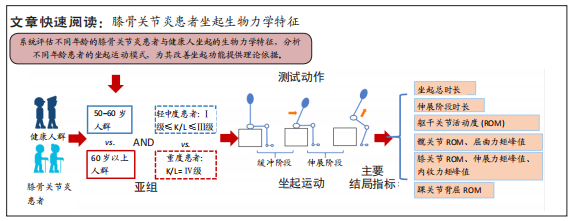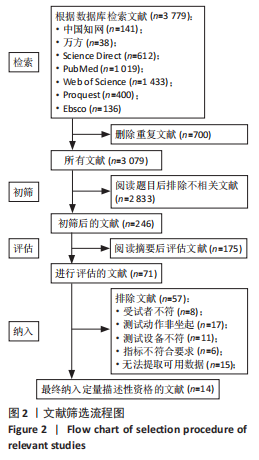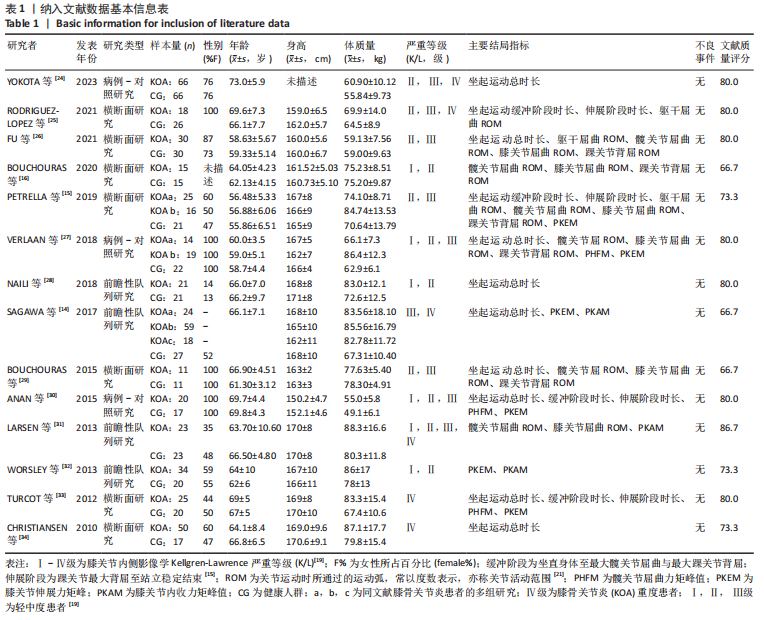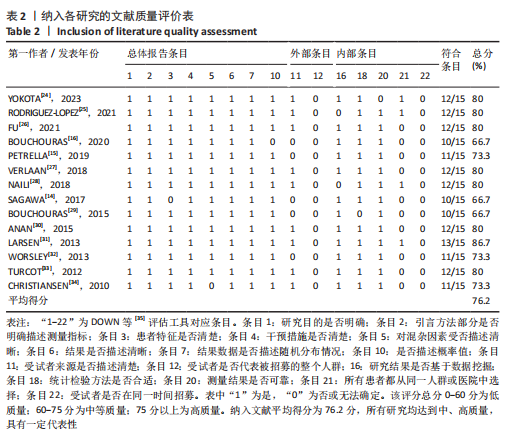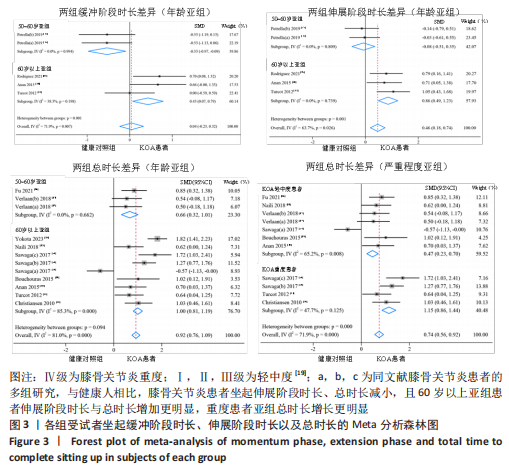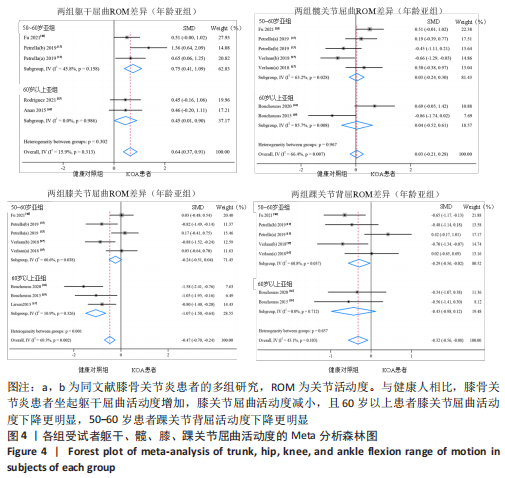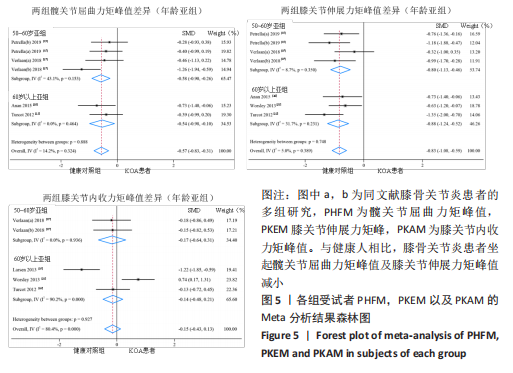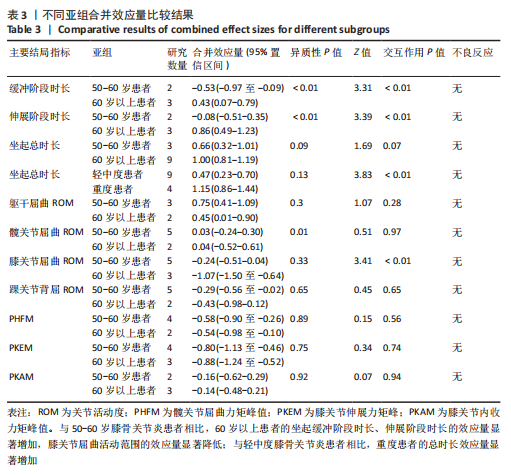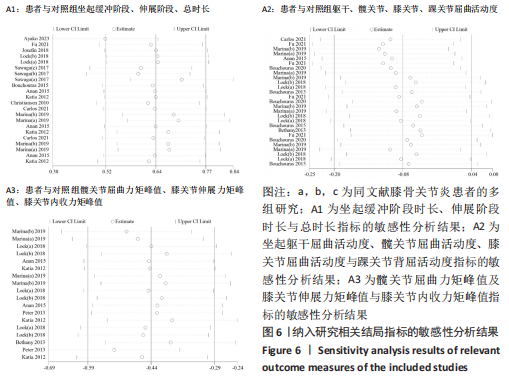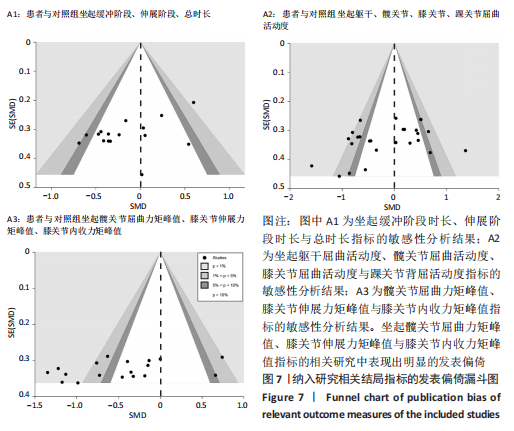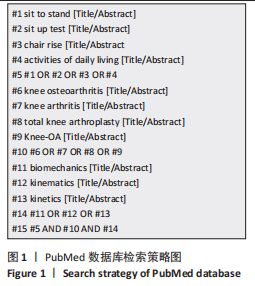[1] 陈百成,张静.骨关节炎[M].北京:人民卫生出版社,2014:18.
[2] LI D, LI S, CHEN Q, et al. The prevalence of symptomatic knee osteoarthritis in relation to age, sex, area, region, and body mass index in China: a systematic review and Meta-analysis. Front Med. 2020;7(1):304.
[3] DANTAS LO, SALVINI TF, MCALINDON TE. Knee osteoarthritis: key treatments and implications for physical therapy. Braz J Phys Ther. 2021;25(2):135-146.
[4] VISSERS MM, BUSSMANN JBJ, DE GROOT IB, et al. Walking and chair rising performed in the daily life situation before and after total hip arthroplasty. Osteoarthritis Cartilage. 2011;19(9):1102-1107.
[5] KATZ JN, ARANT KR, LOESER RF. Diagnosis and treatment of hip and knee osteoarthritis: a review. JAMA. 2021;325(6):568-578.
[6] 王攀, 霍洪峰. 老年人坐立转换时股骨近端应力分布的有限元分析[J].医用生物力学, 2022,37(2):312-316, 322.
[7] SKOU ST, GRøNNE DT, ROOS EM. Prevalence, severity, and correlates of pain flares in response to a repeated sit-to-stand activity: a cross-sectional study of 14902 patients with knee and hip osteoarthritis in primary care. J Orthop Sports Phys Ther. 2020;50(6):309-318.
[8] PRIMORAC D, MOLNAR V, ROD E, et al. Knee osteoarthritis: a review of pathogenesis and state-of-the-art non-operative therapeutic considerations. Genes. 2020;11(8):854.
[9] 安丙辰,戴尅戎.影响膝骨关节炎发病及进展的生物力学因素[J].国际骨科学杂志, 2012,33(3):153-156.
[10] 汤雨婷,安丙辰,郑洁皎.膝骨关节炎生物力学参数的研究进展[J].中国康复理论与实践,2020,26(12):1417-1421.
[11] TENG HL, CALIXTO N, MACLEOD T, et al. Associations between patellofemoral joint cartilage T1ρ and T2 and knee flexion moment and impulse during gait in individuals with and without patellofemoral joint osteoarthritis. Osteoarthritis Cartilage. 2016;24(9):1554-1564.
[12] BURN E, MURRAY D, HAWKER G, et al. Lifetime risk of knee and hip replacement following a GP diagnosis of osteoarthritis: a real-world cohort study. Osteoarthritis cartilage. 2019;27(11):1627-1635.
[13] DOWNIE C. Biomechanical, physiological and cognitive factors in balance recovery in older adults with knee osteoarthritis. Melbourne: Victoria University. 2021.
[14] SAGAWA Y, BONNEFOY-MAZURE A, ARMAND S, et al. Variable compensation during the sit-to-stand task among individuals with severe knee osteoarthritis. Ann Phys Rehabil Med. 2017;60(5):312-318.
[15] PETRELLA M, DA SILVA SERRãO PRM, SELISTRE LFA, et al. Individual joint contributions to the total support moment during the sit-to-stand task differentiate mild and moderate knee osteoarthritis. Clin Biomech. 2019;70(1):52-58.
[16] BOUCHOURAS G, SOFIANIDIS G, PATSIKA G, et al. Women with knee osteoarthritis increase knee muscle co-contraction to perform stand to sit. Aging Clin Exp Res. 2020;32(4):655-662.
[17] HIGGINS JP, THOMAS J, CHANDLER J, et al. Cochrane handbook for systematic reviews of interventions. John Wiley Sons. 2019.
[18] MOHER D, LIBERATI A, TETZLAFF J, et al. Preferred reporting items for systematic reviews and meta-analyses: the PRISMA statement. PLoS Med. 2009;151(4):264-269.
[19] KELLGREN JH, LAWRENCE JS. Radiological assessment of osteo-arthrosis. Ann Rheum Dis. 1957;16(4):494-502.
[20] CHUANG CH, KUO CC, CHIANG YF, et al. Enriched peripheral blood-derived mononuclear cells for treating knee osteoarthritis. Cell Transplant. 2023;32: 09636897221149445.
[21] 张琦,梁媛,张冉,等.运动学对线技术对全膝关节置换术后关节活动度的效果[J].中国康复理论与实践,2022,28(7):764-769.
[22] KHALAJ N, VICENZINO B, HEALES L J, et al. Is chronic ankle instability associated with impaired muscle strength? Ankle, knee and hip muscle strength in individuals with chronic ankle instability: a systematic review with meta-analysis. Br J Sport Med. 2020; 54(14):839-847.
[23] 张天嵩,张苏贤.如何实现Meta分析中不同亚组合并效应量的比较[J].中国循证医学杂志,2017,17(12):1465-1470.
[24] YOKOTA A, MAESHIMA E, SASAKI K, et al. Physical functions associated with health-related quality of life in older adults diagnosed with knee osteoarthritis. J Phys Ther Sci. 2023; 35(1):60-65.
[25] RODRIGUEZ‐LOPEZ C, BECKWéE D, LUYTEN FP, et al. Reduced knee extensor torque production at low to moderate velocities in postmenopausal women with knee osteoarthritis. Scand J Med Sci Sports. 2021; 31(11):2144-2155.
[26] FU S, DUAN T, HOU M, et al. Postural balance in individuals with knee osteoarthritis during stand-to-sit task. Front Human Neurosci. 2021;15(1):760960.
[27] VERLAAN L, BOEKESTEIJN RJ, OOMEN PW, et al. Biomechanical alterations during sit-to-stand transfer are caused by a synergy between knee osteoarthritis and obesity. Biomed Res Int. 2018;2018:3519498.
[28] NAILI JE, BROSTRöM EW, GUTIERREZ-FAREWIK EM, et al. The centre of mass trajectory is a sensitive and responsive measure of functional compensations in individuals with knee osteoarthritis performing the five times sit-to-stand test. Gait Posture. 2018;62(1): 140-145.
[29] BOUCHOURAS G, PATSIKA G, HATZITAKI V, et al. Kinematics and knee muscle activation during sit-to-stand movement in women with knee osteoarthritis. Clin Biomech (Bristol, Avon). 2015;30(6):599-607.
[30] ANAN M, SHINKODA K, SUZUKI K, et al. Do patients with knee osteoarthritis perform sit-to-stand motion efficiently? Gait Posture. 2015;41(2):488-492.
[31] LARSEN BL, JACOFSKY MC, BROWN JA, et al. Valgus bracing affords short-term treatment solution across walking and sit-to-stand activities. J Arthroplasty. 2013;28(5):792-797.
[32] WORSLEY P, STOKES M, BARRETT D, et al. Joint loading asymmetries in knee replacement patients observed both pre-and six months post-operation. Clin Biomech. 2013;28(8): 892-897.
[33] TURCOT K, ARMAND S, FRITSCHY D, et al. Sit-to-stand alterations in advanced knee osteoarthritis. Gait Posture. 2012;36(1): 68-72.
[34] CHRISTIANSEN CL, STEVENS-LAPSLEY JE. Weight-bearing asymmetry in relation to measures of impairment and functional mobility for people with knee osteoarthritis. Arch Phys Med Rehabil. 2010;91(10): 1524-1528.
[35] DOWNS SH, BLACK N. The feasibility of creating a checklist for the assessment of the methodological quality both of randomised and non-randomised studies of health care interventions. J Epidemiol commun health. 1998;52(6):377-384.
[36] JANDRE REIS FJ, MACEDO AR. Influence of hamstring tightness in pelvic, lumbar and trunk range of motion in low back pain and asymptomatic volunteers during forward bending. Asian Spine J. 2015;9(4):535-540.
[37] IIJIMA H, SUZUKI Y, AOYAMA T, et al. Interaction between low back pain and knee pain contributes to disability level in individuals with knee osteoarthritis: a cross-sectional study. Osteoarthritis Cartilage. 2018;26(10):1319-1325.
[38] IIJIMA H, SHIMOURA K, AOYAMA T, et al. Low back pain as a risk factor for recurrent falls in people with knee osteoarthritis. Arthritis Care Res. 2021;73(3):328-335.
[39] YOSHIZUKA H, TANIGUCHI T, FUKUTA K, et al. Decrease in medial meniscal extrusion after physical therapy to improve knee pain and range of motion in patients with knee osteoarthritis: a retrospective study. PLos One. 2022;17(11):e0277628.
[40] ROSADI R, JANKAEW A, WU PT, et al. Factors associated with falls in patients with knee osteoarthritis: a cross-sectional study. Medicine. 2022;101(48):e32146.
[41] ZAJDMAN ORB, FLAXMAN TE, BIGHAM HJ, et al. Females with knee osteoarthritis use a detrimental knee loading strategy when squatting. Knee. 2022;38(1):9-18.
[42] BERTEAU JP. Knee pain from osteoarthritis: pathogenesis, risk factors, and recent evidence on physical therapy interventions. J Clin Med. 2022;11(12):3252.
[43] YAMADA T, DEMURA S, SHIN S. The influence of various upper limb supports on the output of leg muscle strength and the rating of perceived exertion during sit-to-stand movements. Japan Journal of Test and Measurement in Health and Physical Education. 2019;9(1):33-38.
[44] HUNT MA, WRIGLEY TV, HINMAN RS, et al. Individuals with severe knee osteoarthritis (OA) exhibit altered proximal walking mechanics compared with individuals with less severe OA and those without knee pain. Arthritis Care Res. 2010;62(10):1426-1432. |
